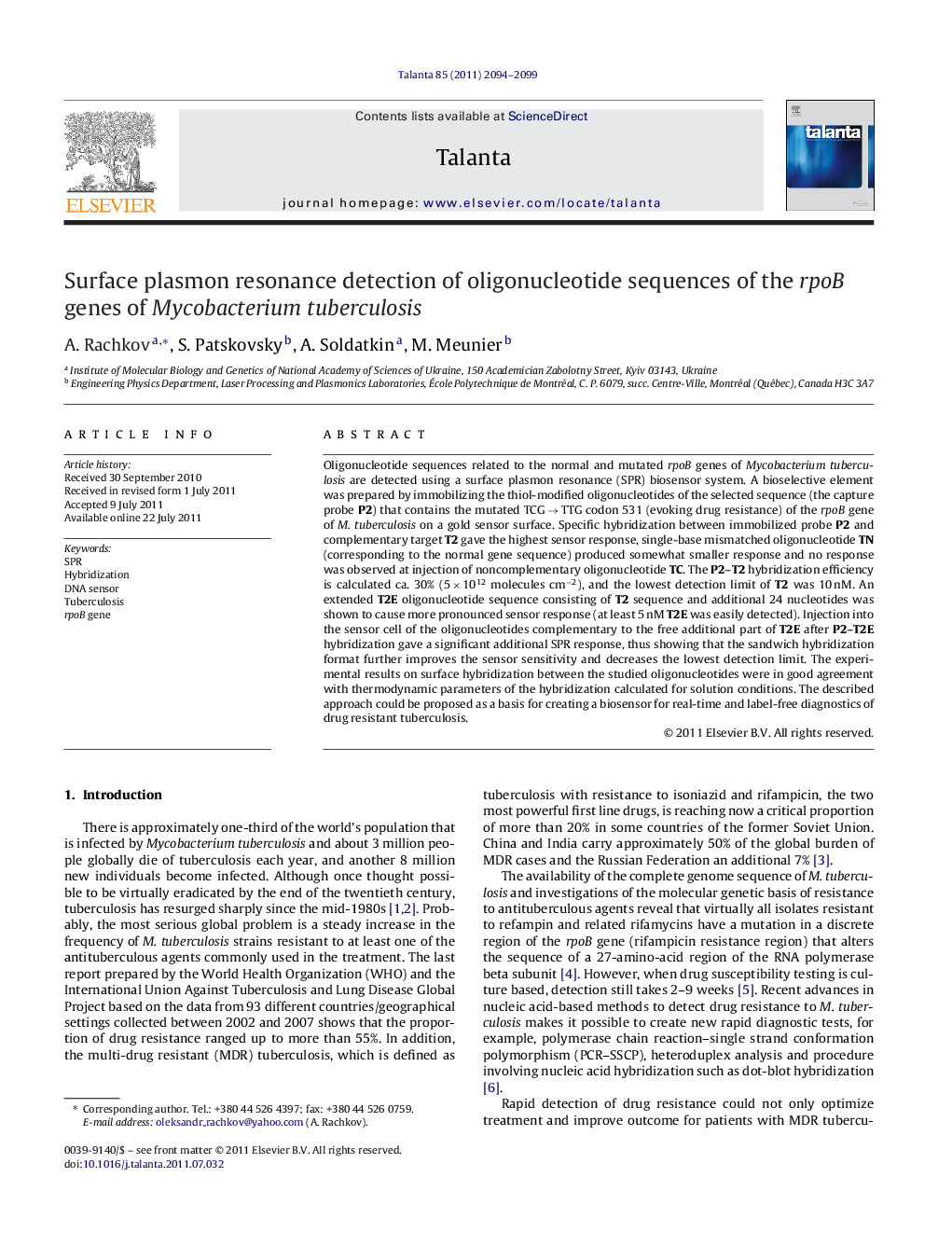| Article ID | Journal | Published Year | Pages | File Type |
|---|---|---|---|---|
| 10559502 | Talanta | 2011 | 6 Pages |
Abstract
Oligonucleotide sequences related to the normal and mutated rpoB genes of Mycobacterium tuberculosis are detected using a surface plasmon resonance (SPR) biosensor system. A bioselective element was prepared by immobilizing the thiol-modified oligonucleotides of the selected sequence (the capture probe P2) that contains the mutated TCG â TTG codon 531 (evoking drug resistance) of the rpoB gene of M. tuberculosis on a gold sensor surface. Specific hybridization between immobilized probe P2 and complementary target T2 gave the highest sensor response, single-base mismatched oligonucleotide TN (corresponding to the normal gene sequence) produced somewhat smaller response and no response was observed at injection of noncomplementary oligonucleotide TC. The P2-T2 hybridization efficiency is calculated ca. 30% (5 Ã 1012 molecules cmâ2), and the lowest detection limit of T2 was 10 nM. An extended T2E oligonucleotide sequence consisting of T2 sequence and additional 24 nucleotides was shown to cause more pronounced sensor response (at least 5 nM T2E was easily detected). Injection into the sensor cell of the oligonucleotides complementary to the free additional part of T2E after P2-T2E hybridization gave a significant additional SPR response, thus showing that the sandwich hybridization format further improves the sensor sensitivity and decreases the lowest detection limit. The experimental results on surface hybridization between the studied oligonucleotides were in good agreement with thermodynamic parameters of the hybridization calculated for solution conditions. The described approach could be proposed as a basis for creating a biosensor for real-time and label-free diagnostics of drug resistant tuberculosis.
Related Topics
Physical Sciences and Engineering
Chemistry
Analytical Chemistry
Authors
A. Rachkov, S. Patskovsky, A. Soldatkin, M. Meunier,
